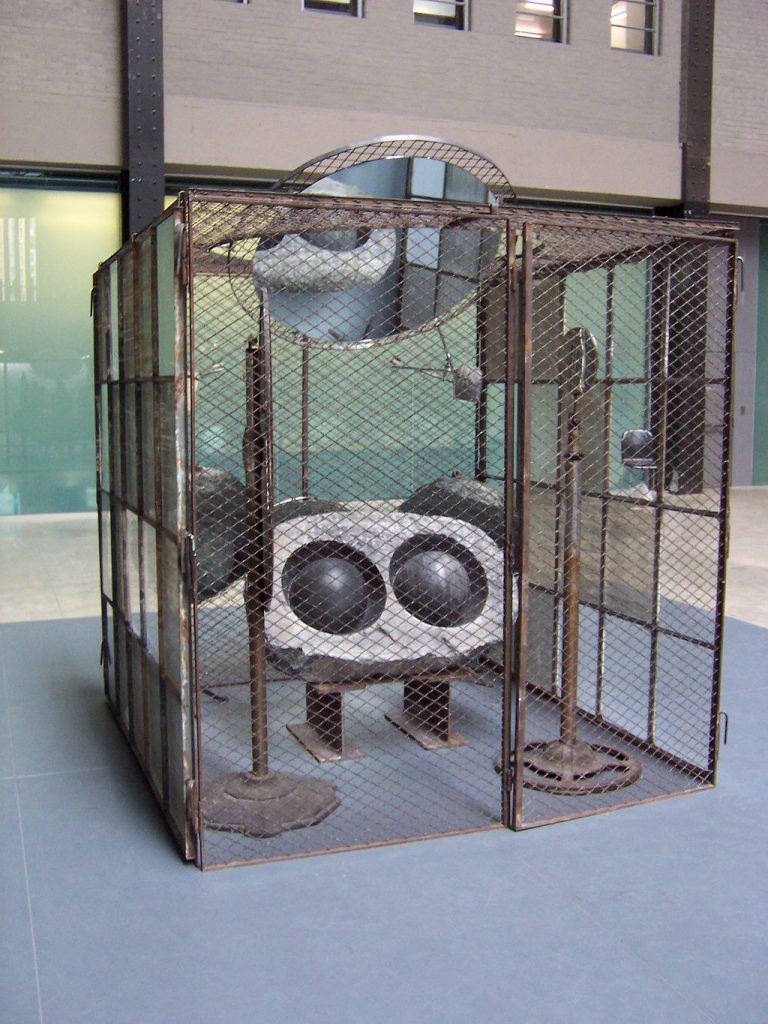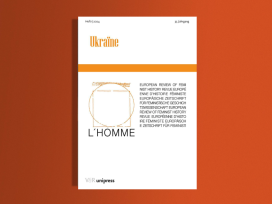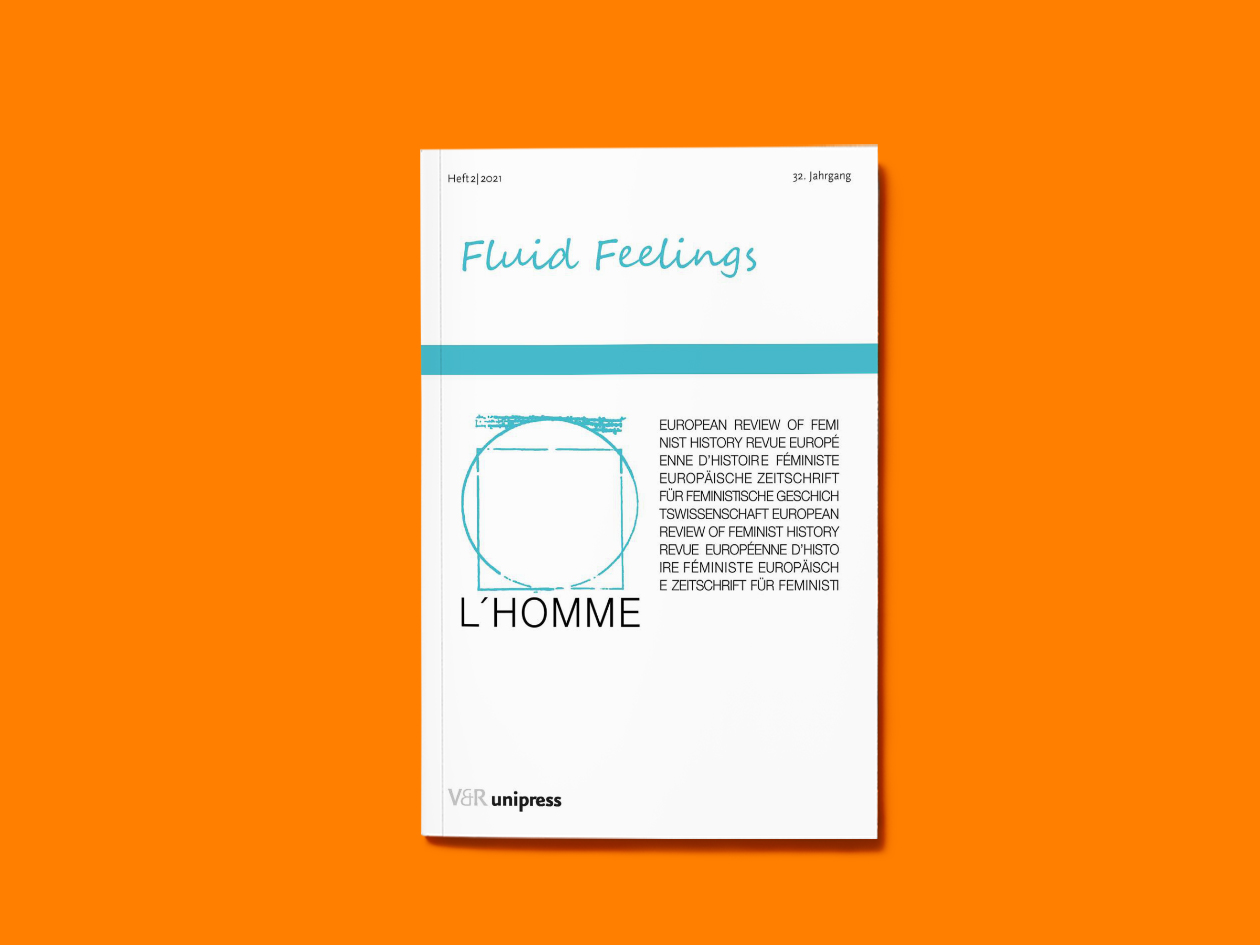Underpaid and overworked: steady gender equality improvements in the Austrian workplace have backslided during the pandemic. What measures could redress the growing imbalance?
I had a conversation with the children on Sunday evening and said that we couldn’t go on like this, because I’m not going into work and I’ll lose my temper otherwise … We drew up a timetable and a list of behaviour rules (HOW TO: stick together, support one another, etc. NOT ALLOWED: to moan, procrastinate, annoy Mum).
Single mother during the first lockdown1
Emma Dowling, sociologist at the University of Vienna, has defined the COVID-19 crisis as an ‘exhaustion of social care resources’.2 In feminist discourse, care work includes both paid and unpaid work, which is performed significantly more often by women than men.3 In a crisis, usual social structures falter and someone always has to take up the extra burden. The gendered connotations of care work and strongly gendered segmentation of the labour market in combination have led to women being more at risk of losing their livelihoods, their social position and suffering from mental and physical strain.
Understanding how this predicament has occurred requires an overview of recent developments, for which we take Austria as example.

Three examples from the Femme Maison series by Louise Bourgeois. Photo via Wikimedia Commons, Fair Use
Unequal development
Both intense dynamism and inertia characterize the development of women’s career paths and employment in Austria in recent decades. Women’s participation in education has risen sharply: in 1971, 70% of women aged between twenty-five and sixty-four had only completed compulsory schooling; today, this is true of just one in five women. Indeed, when it comes to higher education, women have overtaken men.4 As a consequence, the gap between men’s and women’s employment rates halved: in 1994, only just over half of women of working age were employed; by 2020, that figure had risen to two thirds.5
And yet, today, women still earn significantly less than men with the same level of education and are less likely to reach higher positions: only 9% of female academics hold management positions compared with 19% of male academics.6 The choice of educational pathways is still very traditionally gendered: across all levels of education, from apprenticeships to university degrees, women gravitate towards training in social, health, education and service, while men tend to prefer manual, scientific or technical training.7
There has been similarly little change in the distribution of unpaid work. At the beginning of the 1980s, women did three quarters of unpaid work. In 2008/9 they still did almost two thirds of it.8 The insufficient availability of childcare or all-day school places has meant that work opportunities are restricted for women. A boom in part-time work accompanied the rise in women’s employment: in 1994, only a quarter of all working women had part-time jobs; in 2020 almost half of working women did. For mothers, the rise has been even greater: almost three quarters of all women with children under fifteen are currently employed part-time.
While part-time work is becoming the new normal for women, little has changed for men. Full-time work remains the dominant arrangement: only around one in ten men is currently in part-time work. The proportion of men with children in part-time employment is even lower, levelled at only 7%.9
These unresolved labour market gender equality issues are responsible for the gender income gap remaining high. The pay gap has only changed very slowly over the last ten years: in 2009 women earned on average 24.3% less than men; in 2019 that figure was still 19.9%. Gross annual income, including part-time work, was 36.4% lower for women than men in 2019.10
But the recent, modest improvement in women’s economic situation has come to a standstill. In some areas, gender equality has even regressed during the COVID-19 crisis. The lockdown situation has in many cases ‘destroyed the illusion of equality’, according to a study on the distribution of unpaid work during the pandemic.11
The care sector has been particularly badly affected. High public debt – the result of spending to mitigate the pandemic’s economic and social consequences – will severely limit the financial scope for expanding the care sector unless policies can force a shift. Alternative sources of revenue, such as the taxation of assets, or a reallocation of resources could change the situation. Without such a shift, decades of progress towards gender equality in the Austrian labour market is at risk.

Domestic Incidents by Louise Bourgeois at Tate Modern , 2006. Photo by Loz Flowers, CC BY-SA 2.0 via Wikimedia Commons
Rising unemployment
Around half a million people were unemployed in Austria in 2020, a level not seen since World War II. Had it not been for the large-scale deployment of reduced working hour schemes, known as COVID-short-time work, unemployment figures would have risen even more sharply.12
Massive financial losses invariably result from unemployment. Those out of work have to get by on 55% (60% for those on low incomes) of their previous salary, which necessitates significant cuts in living standards, especially for the long-term unemployed. Equally serious are the social and psychological consequences, which are rarely discussed publicly, including loss of social contact and the increased risk of depression among unemployed people.
Women have been more at risk of unemployment as a result of the COVID-19 crisis. On average, female unemployment in 2020 rose by almost 30% compared to 2019, even more than male unemployment (28%).13 The situation has worsened since the end of 2020. Unemployment has been decreasing more slowly among women than men,14 leading to women being unemployed for a disproportionately long time.15 This phenomenon marks a negative reversal of the trend that saw women’s unemployment decrease over the last two decades. Unlike in the 2009 economic crisis, which predominantly impacted the male-dominated industrial sector,16 the COVID-19 crisis particularly affects the female-dominated service sector.
From boardroom to floorboards
However, unemployment caused by the COVID-19 crisis is worse among women than men in almost every field: according to analysis by the Wirtschaftsforschungsinstitut (Austrian Institute of Economic Research), the influence of how employment sectors are structured only explains part of this disproportionate rise.17 Whereas more than half of all women are in atypical forms of employment – in other words not in permanent, full-time positions – this is true for only 16% of men.18
Part-time, marginal employment, fixed-term employment, temporary work and freelancing, all of which fall under Statistik Austria’s definition of atypical employment, are characterized by lower employment stability and fewer social security benefits. The significantly higher unemployment rate among migrant women, female low-skilled workers and young women indicates that precarious employment is associated with a higher risk of becoming unemployed. Moreover, women in rural regions are particularly affected by unemployment.19
Backsourcing and increasing care work responsibilities are also grounds for a disproportionate rise in women’s unemployment. Outsourced care (in kindergartens, schools, etc.) vanished from one day to the next at the beginning of the pandemic and was only partially available for a long time afterwards. Home schooling meant that parents had to take over part of the work of educating their children. Studies carried out during the pandemic show that this extra work was largely undertaken by women, while men continued activities already considered part of their duties before the pandemic.20 Women also made more adjustments to their working hours: a study from summer 2020 shows that women’s working hours both increased and decreased more than those of men.21
Gender and home office
Home working increased sharply during the pandemic, a change for which most employees were neither technically nor organizationally prepared. The Institut für empirische Sozialforschung (Institute for Empirical Social Studies), on behalf of the Vienna Chamber of Labour, conducted a two-phase survey on working from home. It clearly showed that women’s home working conditions are worse. They are less likely to be able to work uninterrupted: 69% of men under forty have a separate home office, as opposed to only 55% of women in the same age group.22
Another survey, conducted on behalf of the Momentum Institute, also investigated the amount of time parents with children under fourteen spent working in a home office during the first and second lockdowns in 2020.23 Whereas both parents often worked outside normal working hours in order to cope with family demands in the first lockdown, in the second lockdown women continued to work in the early morning and evening while men more commonly returned to their normal working hours.24
Women primarily responded to the demands of unpaid housework and childcare, adjusting their working patterns accordingly. Current studies, such as that conducted by Zartler et al., conclude that there has been a shift of unpaid work onto women’s shoulders during the pandemic: ‘I feel very stressed sometimes and have felt for some time that I have to constantly cram my working hours (home office) into every available “time slot” just to do my required hours.’25
For many couples, home working may have made the amount of unpaid work that needs to be done in a household visible for the first time, but this did not lead to any less work for women. On the contrary, women reported that as the crisis continued, they felt increasingly abandoned by their partners to deal with the additional workload of childcare, homeschooling and housework.
Single mothers have been even more heavily impacted. Many reported having to perform an exhausting balancing act: ‘It’s frustrating to see that no single parents are shouting. We just do what we have to do. We carry on because we are the only ones responsible for ourselves and our child(ren). And because we know what it’s like to be trapped at home. Because we are always financially at the limit.’26

Louise Bourgeois – Maman. Photo by Isabell Schulz via Flickr
Clapping isn’t enough
Not all women have had the opportunity to switch to a home office, however. Those employed in key sectors, if they have children, have had to resort to emergency kindergarten and school provision. Their professional activities, indispensable for meeting societal needs yet, up to that point, barely recognized, suddenly became visible. During the first lockdown, the spotlight fell on cashiers employed in food retail, medical personnel, care and cleaning staff, and teachers in schools and kindergartens. It became clear that society could not function without them.
Unfortunately, this increased attention has not led to real changes. No measures have been introduced to give such workers higher wages or improve their working conditions. Nor has there been any substantial financial support for a campaign to address problems in the care and education sector, like looming staff shortage. In some cases, employees received one-off bonus payments, but these are little more than gestures that do nothing to solve structural problems.27
People employed in key sectors also experienced a sharp rise in workload. They were required to react flexibly to changes, often had to work overtime, and were exposed to an increased health risk, with the additional worry that they could endanger their families. A study of the Arbeitsklimaindex (Work Climate Index) for the years 2015 to 2019 by the Institute for Social Research and Consulting has shown that around a million people employed in key sector occupations were already facing high workloads before the pandemic.28
Over 80% of key sector workers, especially in childcare, retail, cleaning and care work, are women. These occupations are characterized by low incomes, family-unfriendly working hours (evenings and weekends), and high levels of physical and psychological strain, such as constant work stress or emotional challenges.
Learning from crisis
The COVID-19 crisis has laid bare the care sector’s fragile employment structure. A lack of human and financial resources means that this work is precarious. Migrant women are key workers in the 24-hour care sector, for example. And, during the pandemic, these jobs have been transferred back to household members, where they are performed for free and overwhelmingly by women.
The structural problems of gender equality in Austria, which have hitherto either been ignored or addressed too lightly, have significantly worsened the situation for women. State support, intended to cushion the effects of the pandemic, shows just how much the government can maneuver its position. Enormous state resources were provided at short notice, taking on increased debt.
However, so far these resources have not benefited women and men equally: only 43.5% of the 26 billion euros in state aid (e.g., short-time work grants, investment premiums, hardship funds) has benefited women.29 Much still needs to be done, therefore, to do justice to the gender budgeting enshrined in the Austrian constitution.30
The goal must be for half of state aid to benefit women and for women’s financial independence to be promoted, regardless of whether they are single or in a couple, with or without children. At least half of labour market funds must be reserved for women and women must be supported not just in proportion to their share of unemployment but disproportionately more as long as the labour market imbalance persists.
Moreover, sustainable equal opportunities in the labour market can only be created if the whole sector of unpaid care work is finally seen as an urgent problem to be resolved by society rather than as the individual, daily ordeal of many women.
Basic education for children of a sufficiently high quality must be guaranteed by public authorities. Every child from its first birthday should have the right to a childcare place at an accessible distance from home that is financially affordable, across all of Austria.31 The school system must ensure that learning takes place primarily in schools and that children have equal opportunities: children’s educational attainment must not be dependent on how much their family is able to help them.
Moreover, a well-developed and affordable range of care services, geared to the needs of those who require care, is essential. These changes must be accompanied by improvements within the care professions.
The division of labour between the sexes must also be considered. In families this split is currently still characterized by part-time work for women and full-time work (with overtime) for men, as a way of ensuring adequate care and financial security.32 Alongside measures aimed at increasing the participation of fathers in childcare and housework, an overall reduction in working hours is also necessary. This step, amongst a long list of growing needs, especially for women, based on political failures, requires urgent attention due to the country’s high unemployment rate.
Ulrike Zartler, Petra Dirnberger, Vera Dafert, Sabine Harter, and Daniela Schimek, Corona: Arbeit und Care (Vienna: Institut für Soziologie 2021), 44.
Talk by Emma Dowling at the 7. Prammer Symposium on the theme “Geschlechtergerechte Krisenpolitik. Für einen feministischen Aufbruch in der Pandemie”, 18 January 2021, https://www.youtube.com/watch?v=kR_aOE8d5J4 (last accessed 22 June 2021).
See Kerstin Jürgens, “Deutschland in der Reproduktionskrise?” Leviathan 38, no. 4 (2010): 559–87.
Statistik Austria, ‘Bildungsstand der Bevölkerung’, https://pic.statistik.at/web_de/statistiken/menschen_und_gesellschaft/bildung/bildungsstand_der_bevoelkerung/index.html (last accessed 21 May 2021).
Statistik Austria, ‘Familie und Arbeitsmarkt’, https://www.statistik.at/web_de/statistiken/menschen_und_gesellschaft/arbeitsmarkt/familie_und_arbeitsmarkt/index.html (last accessed 25 May 2021).
Statistik Austria, ‘Internationaler Frauentag 2021’.
More than a third (35%) of all employed women work in the retail and health and social care sectors alone. See: Statistik Austria, ‘Internationaler Frauentag 2021’. The wage gap between women and men in Austria, despite the decrease, is well above the EU average, according to a press release from 3 March 2021. Correspondingly, there is also a significant income gap: average net monthly income varies between 1,200 euros in professions dominated by women and 2,100 euros in professions dominated by men. See: Andrea Leitner and Anna Dibiasi, ‘Frauenberufe – Männerberufe. Ursachen und Wirkungen der beruflichen Segregation in Österreich und Wien’, in Trotz Arbeit arm. Frauen und Segregation am Arbeitsmarkt (Vienna: MA 57 Frauenabteilung der Stadt Wien, 2015), 79.
Statistik Austria, ‘Zeitverwendungserhebung 2008/09 im Vergleich mit den Erhebungen 1992 und 1981, Zeitaufwand täglich für Haushalsführung, Kinderbetreuung und Freiwilligenarbeit, Personen ab 19 Jahren’.
See Statistik Austria, ‘Familie und Arbeitsmarkt’.
See Statistik Austria, ‘Einkommen’, https://www.statistik.at/web_de/statistiken/menschen_und_gesellschaft/soziales/gender-statistik/einkommen/index.html (last accessed 28 May 2021).
According to the economist Katharina Mader in the APA of 15 June 2021, ‘Lockdown hat Illusion von Geschlechtergleichstellung geraubt’, https://science.apa.at/power-search/5256549606387199161 (last accessed 21 June 2021); Katharina Mader, Judith Derndorfer, Franziska Disslbacher, Vanessa Lechinger, and Eva Siz, ‘Zeitverwendung von Paarhaushalten während COVID-19’, Vienna 2020.
Short-time work is a job retention scheme used during times of economic crisis. It involves employees reducing their work hours while still receiving most of their previous salary (between 80 and 90% of their previous net income). Employers receive a short-time work grant from the Arbeitsmarktservice (AMS, Austrian Public Employment Service) to make up for the lost work hours. Social partner organizations in Austria are the Bundesarbeitkammer (BAK, Federal Chamber of Labor) and the Österreichische Gewerkschaftsbund (ÖGB, Austrian Federation of Trade Unions) on the employee side, and the Landwirtschaftskammer (LWK, Chamber of Agriculture) on the employer side. The Industriellenverinigung (IV, Federation of Austrian Industries) normally also participates in social partner negotiations as a representative of industrial companies. The COVID short-time work scheme was decreed retroactively in §37b Arbeitsmarktservicegesetz (AMSG) of 1 March 2020 and has been amended several times since then, https://www.ris.bka.gv.at/eli/bgbl/1994/313/P37b/NOR40221431 (last accessed 23 June 2021). See also: Arbeitsmarktservice Österreich, ‘Kurzarbeit sichert nachhaltig Arbeitsplätze und Know-How’, in Spezialthema zum Arbeitsmarkt (January 2021).
Arbeitsmarktservice Österreich, ‘Kurzarbeit’, figures for 2020.
Sophie Kremer und Barbara Wanek-Zajic, ‘Der Arbeitsmarkt in der Corona-Krise’, Statistische Nachrichten 20, no. 9 (2020), published by Statistik Austria, 651.
In relative figures, the number of long-term unemployed people rose by 39.5% in March 2021 compared to the previous year. The rise was even higher among women than men: respectively 41.7% and 37.8%. https://arbeitplus.at/statistiken/entwicklung-arbeitslosigkeit-aktuelles-monat/ (last accessed 25 May 2021).
Arbeitsmarktservice Österreich, ‘Die Finanz- und Wirtschaftskrise 2009 und die Covid-19 Krise 2020 – ein Vergleich’, Spezialthema zum Arbeitsmarkt (February 2021).
Julia Bock-Schappelwein und Ulrike Famira-Mühlberger, ‘Frauen auf dem Arbeitsmarkt vor und während der COVID-19 Krise’, WIFO Research Briefs 3 (2021): 2.
Statistik Austria, ‘Arbeitsmarktstatistiken 2019, Ergebnisse der Mikrozensus Arbeitskräfteerhebung und der Offenen-Stellen-Erhebung Hauptergebnisse’.
‘Zwei Drittel mehr Frauen auf Jobsuche’, https://orf.at/stories/3204399/ (last accessed 26 May 2021).
Mader et al., ‘Zeitverwendung’; Zartler et al., Corona.
Franziska Foissner, Vera Glassner, and Simon Theurl, ‘Krisengewinner Patriarchat? Wie die Covid-Arbeitsmarktkrise Frauen trifft’, in Ursula Filipič and Annika Schönauer, Ein Jahr Corona: Ausblick Zukunft der Arbeit (Vienna: ÖGB Verlag, 2021).
Aleksandra Waldhauser (IFES), ‘Zeit- und ortsunggebundenes Arbeiten (Homeoffice), April und November 2020’, https://www.arbeiterkammer.at/interessenvertretung/arbeitundsoziales/arbeitszeit/Home-Office_Welle_2_PK_2020-11-24.pdf (last accessed 21 June 2021).
The first lockdown began on 16 March 2020 and included school closures; schools began to open again from 4 May 2020. The second lockdown began on 17 November 2020, with educational and childcare establishments closed again. Compulsory schools and kindergartens reopened on 7 December 2020.
Paul Ringler and David Baumegger (SORA), Zur Situation von Eltern während des zweiten Lockdowns in der Coronapandemie (Vienna: Momentum Institute, 2020), 12.
Zartler et al., Corona, is part of a large-scale longitudinal study on COVID-19 and family life. Starting in the first lockdown, parents were interviewed on nine separate occasions and/or recorded their experiences in diaries. Further surveys are planned. https://ucris.univie.ac.at/portal/de/projects/parents-and-the-covid19-pandemic(efc8f92d-8fe0-4f8c-b5fa-5c5bd988947f).html (last accessed 21 June 2021).
Zartler et al., Corona. More information on the situation of single mothers: https://awblog.at/leben-am-limit-alltag-von-alleinerzieherinnen/ (last accessed 21 June 2021).
As recognition of their extraordinary services during the COVID-19 pandemic, hospital doctors, members of the healthcare and nursing professions, and people employed in the mobile, outpatient and inpatient care sectors received a financial bonus of, on average, 500 euros. See: https://www.parlament.gv.at/PAKT/PR/JAHR_2021/PK0749/index.shtml (last accessed 23 June 2021).
Daniel Schönherr and Martina Zandonella (SORA), Arbeitsbedingungen und Berufsprestige von Beschäftigten in systemrelevanten Berufen in Österreich. Sonderauswertung des Österreichischen Arbeitsklima Index (Vienna, 2020).
Anna Hehenberger and Anna Pixer, ‘Österreichische Corona-Hilfen im Gender-Check (Momentum Institut)’, Policy Brief 4 (2021), 3 March 2021, 1.
The goal of true equality between women and men in budgeting has been enshrined since January 2009 in Art. 13 Sect. 3 of the Austrian Constitution: ‘Federation, Länder, and municipalities must aim for true equality between women and men in budgeting’.
Currently, the Länder and municipalities are responsible for childcare facilities, but availability varies widely from region to region.
Bettina Stadler and Ingrid Mairhuber, Arbeitszeiten von Paaren, Aktuelle Verteilungen und Arbeitszeitwünsche (Vienna: FORBA-Forschungsbericht, 3/2017).
Published 15 March 2022
Original in German
Translated by
Isabelle Chaize
First published by L'Homme 2/2021
Contributed by L'Homme © Gerlinde Hauer / Ingrid Moritz / L'Homme / Eurozine
PDF/PRINTPublished in
In collaboration with
In focal points
Newsletter
Subscribe to know what’s worth thinking about.
Related Articles

Hidden groundbreakers
L'Homme 1/2024
Localized political shifts have shaped Ukrainian women’s rights over the centuries: the Russian Empire once afforded property rights for aristocratic women in the south; socially active daughters of Greek-Catholic priests founded Galician societies under Habsburg rule; and forced migrants today forge new academic paths.

The euphoria of anti-fascists from WWII-occupied countries, meeting at international events, was a short-lived reprieve from oppression. Hungarian socialist groups, bringing women from all social classes together, went from publishing starstruck articles to testifying in Stalinist show trials, their solidarity forced into betrayal.
 This article was first published in
This article was first published in 





